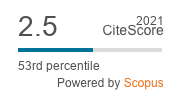IDENTIFICATION AND TRACKING COSTS IN ORGANIZATION
Milena Tadic, Goran Sekulic, Stanka Filipovic
Abstract: Lake Skadar is located on the Yugoslav-Albanian border. The lake is the largest at the Balkan and has a surface area which fluctuates seasonally from 370 to 600 km2. Although its precise origin is unknown, the lake probably for med during the Tertiary and/or Quaternary periods by dissolution of limestone in an active tectonic basin. The present day lake, a subtropical body of water lying 5 m above sea level, has a 5490 km2 drainage basin. The area of Skadar Lake basin and the lake itself, with all their specific features, was and still is a challenge for various researchers. However, in spite of all that, the water status of the Skadar Lake has not been defined in the light of "EU Guideline for water".Regarding it, in this work are emphasized the basic aims of aforementioned guideline, with retrospective view on their practical implementation. The available database of the current monitoring of the Skadar lake waters is shown in this work in order to distinguish the necessity for operative monitoring in the direct lake basin and research monitoring of the Skadar Lake waters, according to defined elements.The processed data show the impact of pollution sources in the basin (waste waters in the settlements and industries, where the Aluminium plant in Podgorica is dominant and uncontrolled usage of fertilizers) on Skadar Lake waters quality, but it is not still enough to define the Skadar lake waters status according to elements from the Guideline.
Keywords: research monitoring, status, water, Skadar Lake
DOI:
Recieved: 05.02.2010 Accepted: 28.06.2010 UDC: 502.171:546.212
Reads: 1333 








